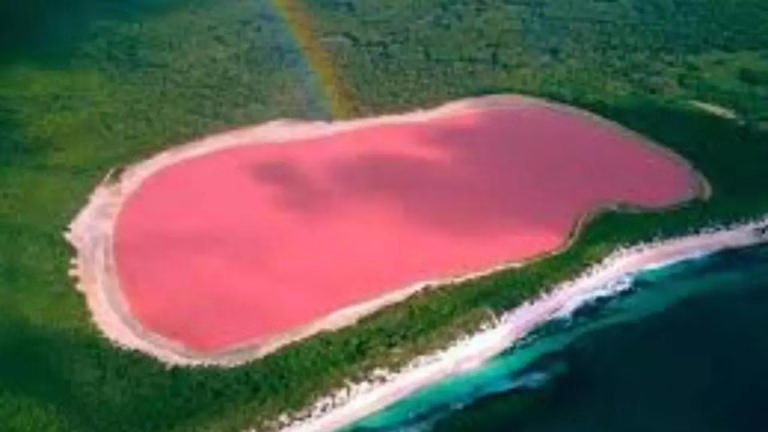The Enchanting Palette of Australia’s Pink Lakes: A Deep Dive into the Science Behind the Spectacle
Australia, a land of stark contrasts and breathtaking landscapes, boasts a collection of natural wonders that continue to captivate the world. Among these, the mesmerizing pink lakes stand out as a testament to the power of nature’s artistry. These surreal bodies of water, painted in hues of rose, magenta, and bubblegum, aren’t a figment of imagination but a real phenomenon, grounded in fascinating scientific principles. From the iconic Lake Hillier to the remote Lake Hart, these pink wonders owe their vibrant coloration to a complex interplay of biology, chemistry, and the unique Australian climate. Let’s embark on a journey to unravel the secrets behind these extraordinary aquatic spectacles.
The Salty Secret: The Foundation of Pink Lakes
The foundation of any pink lake lies in its high salt concentration. These aren’t your average freshwater bodies; they are hypersaline lakes, containing significantly more dissolved salt than the ocean. This extreme salinity creates an environment where only specialized organisms, adapted to these harsh conditions, can survive. Think of it as a specialized ecosystem, where only the toughest players can thrive. This high salt content is crucial for the proliferation of the key player in the pink lake drama: Dunaliella salina.
Dunaliella salina: The Artist Behind the Pink Brushstrokes
Dunaliella salina is a type of halophilic (salt-loving) microalgae that thrives in the concentrated salt solutions of these lakes. These microscopic powerhouses are the primary artists responsible for the pink hues. When exposed to high levels of salinity and intense sunlight, Dunaliella salina produces a red pigment called beta-carotene. This pigment acts as a natural sunscreen, protecting the algae from the damaging effects of ultraviolet radiation. The more salt in the water, the more Dunaliella salina flourishes, and the more beta-carotene it produces, resulting in a deeper, more intense pink color.
The Supporting Cast: Bacteria and the Color Symphony
While Dunaliella salina is the star of the show, other microorganisms also contribute to the vibrant color palette. Haloarchaea, a type of salt-loving bacteria, also play a role in intensifying the pinkish-red appearance of the lakes. These bacteria, along with other microbial communities, contribute to the complex ecosystem within the lake, further influencing the overall color and vibrancy. It’s a complex ecological dance, where different organisms play their part in creating the stunning visual effect.

A Dynamic Canvas: The Ever-Changing Colors of Pink Lakes
The beauty of pink lakes lies not only in their vibrant color but also in their dynamic nature. These lakes are not static; their colors shift and change depending on a variety of environmental factors, including temperature, salinity, and the activity of the microbial communities.
The intensity of the pink hue is directly linked to the concentration of Dunaliella salina and its beta-carotene production. During warmer months or periods of drought, as the salinity increases, the algae thrive, and the lake’s color intensifies. Conversely, during cooler periods or after rainfall, when the salinity decreases, the algae’s activity slows down, and the pink color may fade or even disappear. This constant interplay of environmental factors creates a dynamic and ever-changing spectacle, making each visit to a pink lake a unique experience.
Beyond the Color: The Chemistry of Salt Crusts
The extreme salinity of these lakes often leads to the formation of thick salt crusts on the surface. These crusts, shimmering in the sunlight, add another dimension to the visual spectacle. The salt crystals themselves can reflect and refract light, creating a dazzling effect that complements the pink water. This combination of color and texture creates a truly otherworldly landscape.
Exploring Australia’s Pink Gems: A Journey Through Color
Australia is home to a number of stunning pink lakes, each with its own unique charm and character. Here are a few notable examples:
-
Lake Bumbunga: Located near Adelaide, Lake Bumbunga is easily accessible and offers a stunning display of pink hues. Its changing colors, influenced by the salinity levels, make it a photographer’s paradise.
-
Lake Hart: Situated in the heart of the South Australian outback, Lake Hart is a remote and breathtakingly beautiful pink lake. Its shallow waters and shimmering salt crusts create an ethereal atmosphere, especially under the starry night sky.
-
Hutt Lagoon: On Western Australia’s Coral Coast, Hutt Lagoon is a vast expanse of pink, red, and purple waters. Its dynamic colors, influenced by the season and time of day, make it a must-see attraction.
-
The Pink and Rainbow Lakes of Esperance: Near the coastal town of Esperance, Western Australia, a collection of pink and rainbow lakes awaits. These lakes, ranging in color from soft pastels to vibrant oranges and reds, offer a truly diverse and unforgettable experience.
A Natural Wonder Worth Preserving
Australia’s pink lakes are more than just beautiful landscapes; they are complex ecosystems, home to unique organisms and driven by intricate scientific processes. Understanding the science behind these natural wonders allows us to appreciate their fragility and the importance of preserving them for future generations. These pink jewels of the Australian landscape are a reminder of the power and beauty of nature, a testament to the intricate dance of life and chemistry that creates such breathtaking spectacles. They are a reminder that the world is full of wonders, waiting to be discovered and explored.
more news bulletinbuzzs